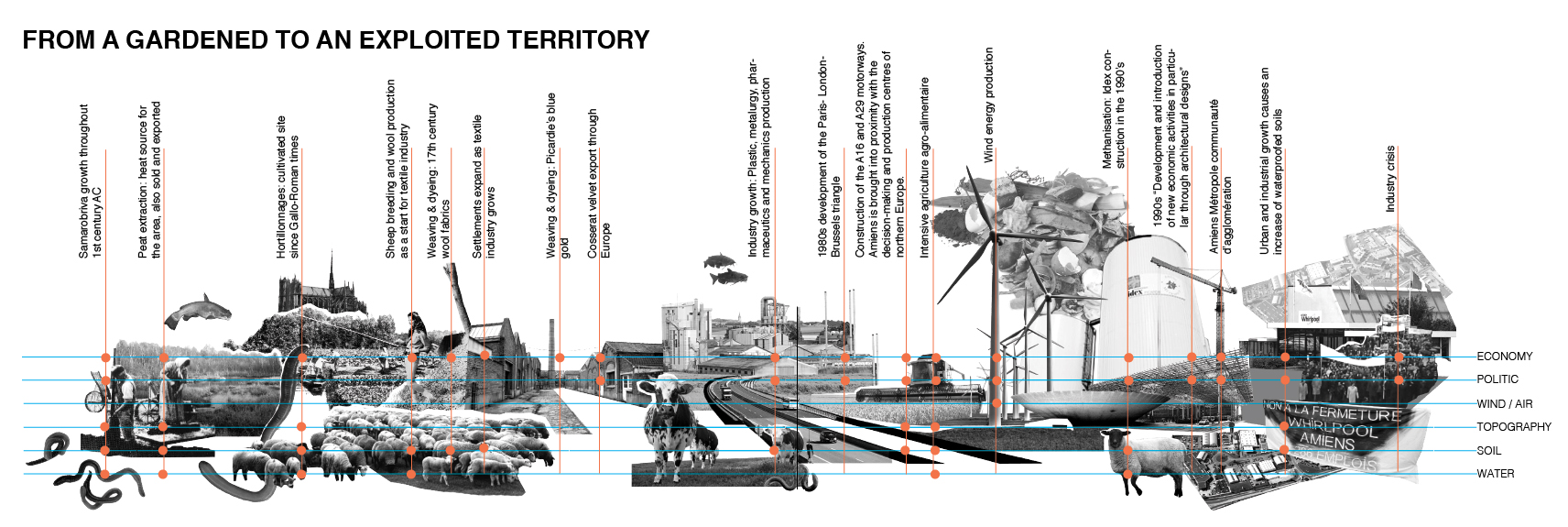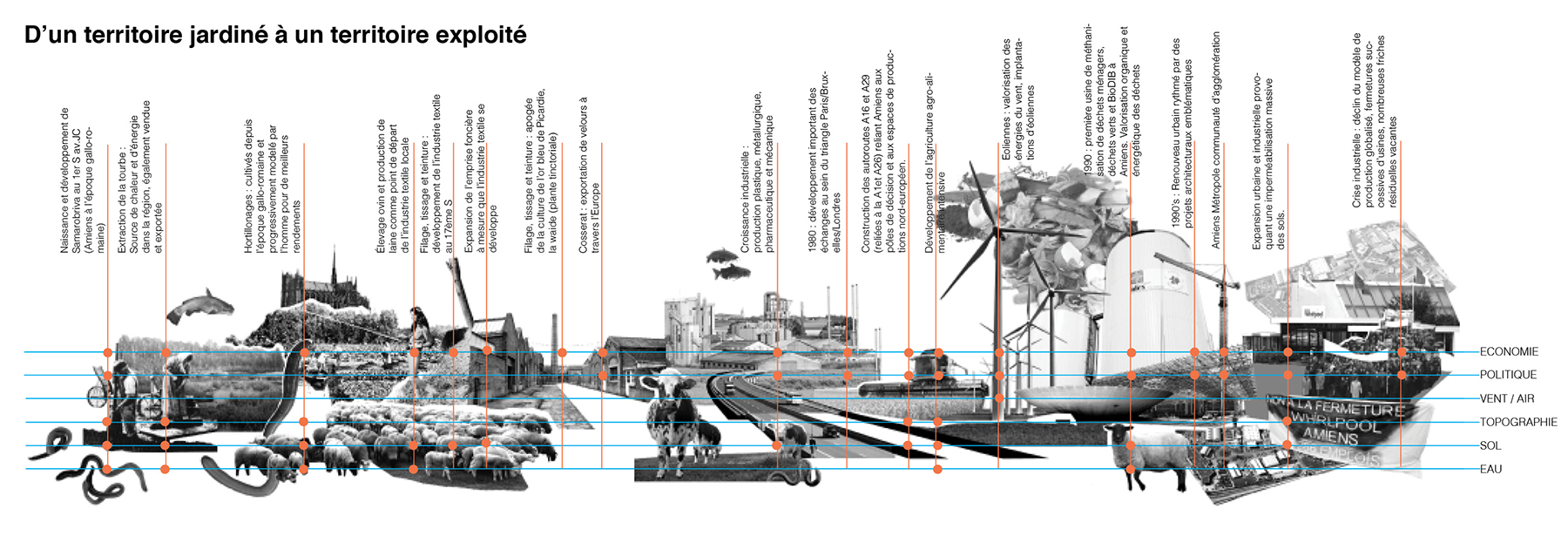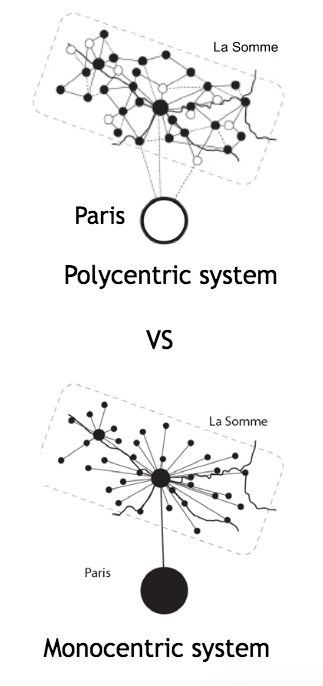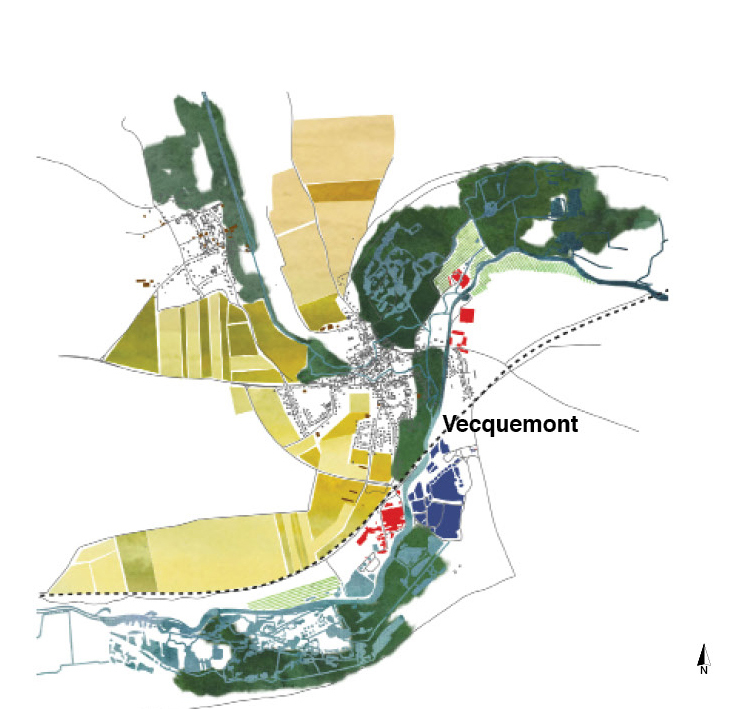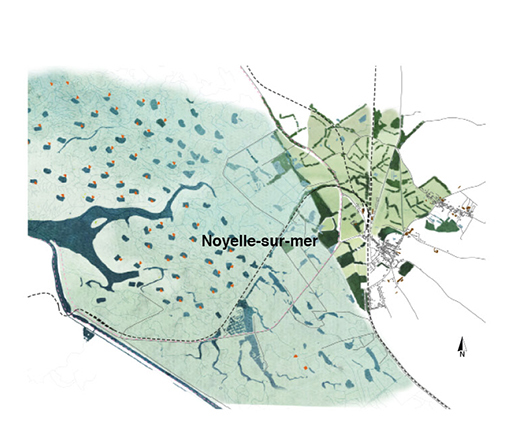The metaphor of the earthworm and the caterpillar – reflection on a two-tier territory
“The field (conditions) moves from the one to the many, from individuals to collective, from objects to fields”
Stan Allen, Field condition in Point and Lines, 1999
D’un urbanisme de zoning à une fabrique de la ville par son sol et ses ressources
Le projet «Cultiver la ville ou les enseignements du ver de terre» se construit sur une prise de conscience : depuis la première révolution industrielle l’Homme agit en tant que force de bouleversement majeure de l’environnement à l’échelle locale et globale.
Dans ce contexte, il est crucial de penser autrement la manière dont les territoires sont aménagés et habités.
La ville résulte de plus en plus d’opérations de programmation produisant un tissu urbain fragmenté et déconnecté du territoire dont elle dépend. Oubliés sous les revêtements urbains, Les sols des villes sontréduits à une fonction de support physique. Ils jouent pourtant un rôle fondamental dans le fonctionnement des villes en tant que milieu de vie, producteur de biomasse et régulateurs hydriques et climatiques.
Notre démarche consiste à fabriquer la ville productive àpartir de son sol et de la valorisation de ses ressources. Elle s’inspire de la pratique du ver de terre, jardinier des sols, qui agit commemédiateur du vivant.
From a zoning urbanism to a production of the city from its soil and its resources
The project “Cultivating the City or The Learning of The Earthworm” is built on an awareness: since the first industrial revolution, humankind acts as a force of major upheaval of its environment on a local and global scale. In this context, it is crucial to think differently about how territories are developed and inhabited. The city is the result of sectorial programming producing a fragmented urban fabric disconnected from the territory on which it depends and lies on.
We approach Somme Department by understanding it as a “documentary field” that stores information. This field looks at the geology as the evidence of anthopogenic forces, as dynamic entity that responds to sociopolitical, economical and environmental factors and their entitlement.
This approach can be explained with the definitions of the Planetary Garden and the Garden in Motion by the landscape architect Gilles Clément. The Planetary Garden is a way to reflect and define interactions between humans and ecosystems. In this model, humans become gardeners. For the Garden in Motion, the gardener’s aim is “to do the utmost with the least against” enhancing diversity. Therefore, it is important to foster the biological quality of the substrates: water, soil, air, and to take action with the greatest saving of means, restricting the input and the presence of degenerative and disturbing factors.
The presence of the Earthworm is an evidence of well-managed gardens. By contrast, the presence of the Caterpillar, a voracious feeder, is the consequence of autistic, strongly manipulated and mono-functional territories, that suffer de-contextualisation, and with it the destruction of all kind of diversity.
Earthworms are soil gardeners, their activity modifies their environment and therefore, directly or indirectly, regulate the availability of resources for other organisms. They support biological, chemical, physical processes and contribute restoring and the return of biodiversity in disturbed ecosystems.
Whole metabolic urban processes develop from the ground: from the microorganisms and bacteria that depurate and fertilise, to hydric and climatic regulations that have an influence on urban temperature, to water and waste management, to food and energy production, etc.
“Il faut toute une région pour faire la ville”
Patrick Geddes (1925) – Cities and the Soil they Grow from -, the Survey, n°54.
“A whole region is necessary to make a city”
Patrick Geddes (1925) – Cities and the Soil they Grow from» -, the Survey, n°54.
Montières s’inscrit dans la Communauté d’Agglomération d’Amiens Métropole et fait partie du Département de la Somme : une structure polycentrique du point de vue physique mais centralisée du point de vue administratif. En effet, le département a été for- tement influencé par les conditions géologiques de la vallée de la Somme : sa topographie, son hydro- logie et son sol ont produit des intervalles de zones humides, de forêts et de terres agricoles qui intera- gissent avec une constellation de petits bourgs.
Cette organisation territoriale polycentrique offre une alternative possible au modèle d’organisation hors-sol et centralisé de l’île de France. Elle possède les atouts nécessaires pour répondre à l’ambition de « métropole fertile » formulée par Amiens métro- pole.
Le projet s’appuie sur l’analyse de quatre « cellules» ou « centres productifs » du département tiraillés entre des logiques territorialisés et des modèles de production hors sols.
La cellule de Rosières-en-Santerre influencée par le système agricole, la cellule de Noyelles-sur-Mer influencée par sa proximité avec le système côtier, la cellule de Vecquemont influencée par sa proximité avec la Somme et la cellule de Montières influencée par le contexte urbain.
This poly-centric territorial organisation offers a possible alternative to the centralised and soilless model of the Ile de France. It has the necessary assets to meet the ambition of «fertile metropolis» expressed by Amiens metropolis.
The project leans on the analysis of four productive cells or centres of the department that are torn in two between territorialised logics and the soilless production models.
Each one of the four cells has a different narrative, and is influenced by different resources and flows:
The Vecquemont cell, mainly influenced by the presence of industry, the Noyelles-sur-Mer cell, mainly influenced by its proximity to the coastal system, the Rosières-en-Santerre cell, mainly influenced by farming activities and finally the Montières cell mainly influenced by the urban context.
1.Rosière – en – Santerre, le plateau agricole de Santerre
1.Rosière – en – Santerre, agricultural plateau of Santerre
2. Vecquemont, les berges de La Somme
2. Vecquemont, river bend of La Somme
3. Noyelle-sur-Mer, la baie de Somme
3. Noyelle-sur-Mer, the Somme bay

